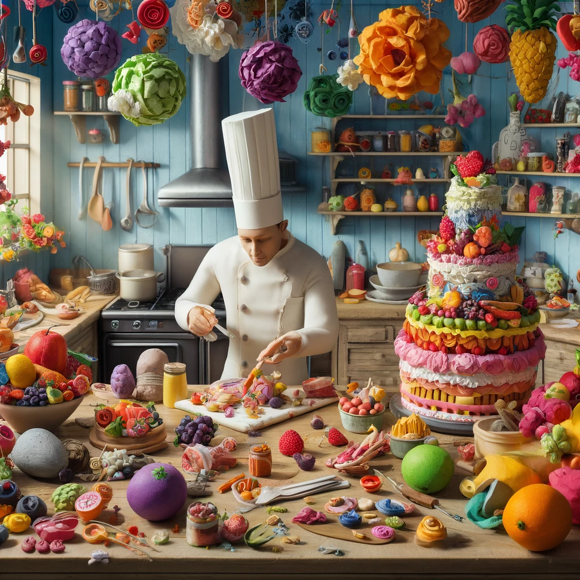In the realm of art, papier-mâché is often revered for its ability to transform the ordinary into the extraordinary. From crafting intricate sculptures to creating whimsical masks, papier-mâché has established itself as a versatile medium capable of inspiring awe and igniting imaginations. However, what if we ventured beyond the traditional artistic boundaries of papier-mâché and explored its potential in the culinary realm? Could this humble craft material be transformed into a delectable delight, tantalizing taste buds and redefining our perception of edible art?
Intrigued by this culinary conundrum, I embarked on a journey to explore the uncharted territories of papier-mâché cuisine. My quest led me to the doorstep of renowned chef and culinary adventurer, Pierre Papillon, a maestro in the art of edible artistry. With a twinkle in his eye and a whisk in hand, Chef Papillon welcomed me into his kitchen, eager to unveil the secrets of papier-mâché gastronomy.
Chef Papillon explained that the key to crafting culinary papier-mâché lies in selecting the right ingredients. “The paper base is crucial,” he asserted, “it must be food-grade and possess the structural integrity to withstand the culinary creations we’ll be crafting.” Armed with this newfound knowledge, we ventured into his pantry, where an array of edible papers awaited our exploration. From delicate rice paper to robust wonton wrappers, each sheet held the potential to be transformed into a culinary masterpiece.
With our ingredients assembled, Chef Papillon guided me through the intricate process of transforming papier-mâché into edible art. We began by soaking the paper sheets in a mixture of water and flavorings, imbuing them with subtle hints of herbs and spices. Once pliable, the paper was carefully molded into intricate shapes, reminiscent of delicate flower petals or the graceful curves of seashells.
As the papier-mâché creations took form, Chef Papillon introduced me to the art of edible embellishments. With a delicate brush, he painted the paper structures with vibrant food coloring, transforming them into a kaleidoscope of colors. Gold leaf flakes were meticulously applied, adding a touch of opulence and grandeur to our culinary creations.
The final step involved filling the papier-mâché forms with delectable fillings, each bite a symphony of flavors and textures. Sweet creations were filled with airy mousses and creamy ganaches, while savory delights concealed savory fillings of spiced vegetables and tender meats.
As we savored our papier-mâché creations, I realized that the culinary possibilities of this humble medium were truly limitless. With creativity as our guide and taste buds as our compass, we could transform papier-mâché into edible masterpieces that not only delighted the eye but also tantalized the palate.
Papier-mâché, once confined to the realm of art, had unveiled a hidden culinary dimension, proving that its transformative power extended beyond the boundaries of traditional artistry. It was a testament to the boundless creativity and ingenuity that lie within the simplest of materials, waiting to be discovered by those with the courage to explore the uncharted territories of taste and imagination.
